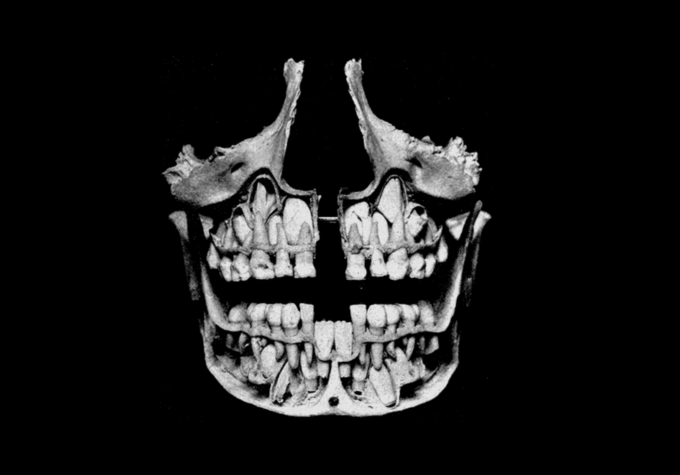
Photograph Source: Henry Vandyke Carter and one more author – Henry Gray (1918) Anatomy of the Human Body (See “Book” section below) Bartleby.com: Gray’s Anatomy, Plate 1001 – Public Domain
For St. Louis kids and parents in the 1960s, the term “baby teeth study” had a special meaning.
It meant kids returning home from school with flyers asking their parents to donate a tooth to Washington University.
It meant articles and photos in newspapers, giving updates and appealing for more donations.
It meant public presentations by leading scientists and citizens on the importance of the study.
And, perhaps most memorably, it meant awarding kids a metal pin with a drawing of a boy missing his front teeth, above the words “I Gave My Tooth to Science.”
The big fuss over baby teeth was a landmark grassroots collaboration of scientists and citizens to document rising radioactive fallout in bodies from above-ground nuclear weapons tests, which had become a major public health concern.
In total, over 300,000 baby teeth were donated. Lab testing of teeth found that levels of Strontium-90 (Sr-90) in teeth were 50 times greater in children born in the mid-1960s than those born in the early 1950s.
More importantly, it helped speed the ban on above-ground tests – an enormous achievement in preventive health. After being briefed on tooth study results, President John F. Kennedy made clear the dangers of fallout entering human bodies – especially young bodies (“children and grandchildren with cancer in their bones, with leukemia in their blood, or with poison in their lungs… should be of concern to us all”).
This great citizen-scientist effort took place a long time ago. But now, years after it seemingly ended, the study is entering a new phase – a means of better understanding health hazards of fallout from atomic bomb tests.
The original study never explored human health hazards of fallout. But two unplanned events – the 2001 discovery of over 100,000 teeth not tested, and a 2019 federal grant to Harvard University – resulted in information on each tooth and its donor to be entered into a spreadsheet.
Teeth can now be used to study fallout’s health consequences on people. Sr-90 decays slowly, and is still detectable in teeth. And tooth donors are now age 55 to 75, so fallout health hazards can be evaluated not just in childhood, but throughout a lifetime.
The Cold War battle for nuclear superiority included over 500 above-ground tests, mostly by the U.S. and Soviet Union. Yield from the tests equaled 40,000 Hiroshima bombs, spread across the globe, and entered bodies through food and water.
Just two studies of health risks have been conducted by the U.S. government, one estimating thyroid cancer cases and the other estimating cancer deaths, but understanding of the health impacts of testing remains limited. The Radiation and Public Health Project research group (RPHP), the recipient of the tooth collection from Washington University, hopes to improve on this knowledge.
One way to measure risk is mortality. Of the 100,000 teeth donated by 37,000 individuals (some gave more than one tooth), about 6,000 are now deceased, including 1,600 who died of cancer. Determining if Sr-90 in baby teeth of those who died of cancer is higher than levels in survivors will be reviewed. Sr-90 levels in teeth of those with other diseases will follow.
Such an enormous and unique collection of human samples can and should be used for purposes other than bomb fallout. Harvard University is testing a sample of the teeth for exposure to metals, and comparing exposures to risk of neurological disease later in life. Teeth can also be used for research on pesticides, fluoride, anthropology, dental health, and other purposes; RPHP is encouraging scientists to make use of the collection.
The study of bomb fallout and cancer is not an idle look at history, but a relevant matter. The same Sr-90 and dozens of other radioactive chemicals are discharged daily by 93 power reactors across the U.S. (nearly 400 around the world). RPHP is collecting teeth from children living near reactors, to compare early-life Sr-90 exposures across generations.
Broader knowledge of this important topic can lead to policy changes to reduce exposures, much like the test ban treaty led to dramatic declines in Sr-90. In turn, reduced exposures can lead to lower cancer risk. Nearly 60 years after helping reduce the threat of radioactivity, the tooth study stands poised to do more of the same.